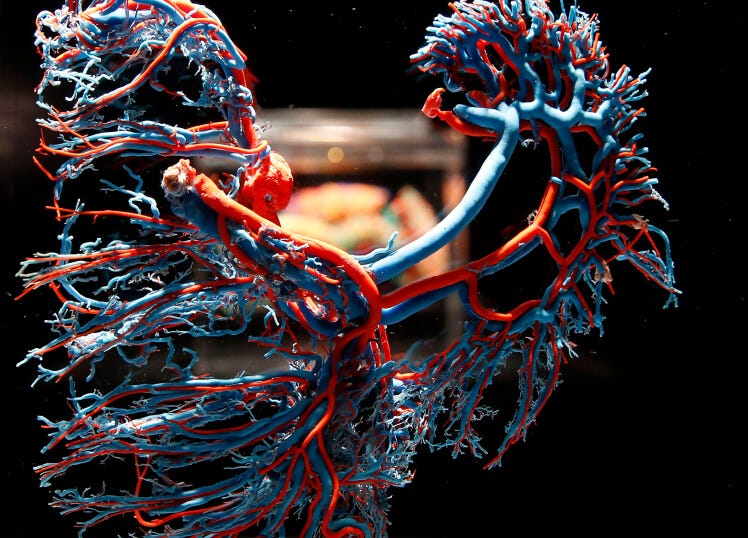#55: What Lies Beneath
A short post exploring a morbid fascination with the human form as both art and education.
On a humid June evening in Atlanta, I hopped a bus to Atlantic Station to see Bodies: The Exhibition, in which over 200 people’s bodies1 are preserved to educate, forever immortal in polymer.

Jarring, shaking you from your daily grind, the exhibit (and others similar to it, like Body Worlds) doesn’t simply teach. System by system, you weave through rooms and around figures juxtaposed in standing or moving poses. Shed of all layers except the ones under study in that room, you were faced with the minute engineering of muscle and sinew and nerve that makes us all the same - human.
By making it permanent, it asks us to face our own mortality and impermanence.
What makes the human form as a subject of art - beyond furious sketches of figure and gesture - so fascinating?
Aside from the cause for self-reflection, it can one of curiosity. We barely know our own bodies and how they work.

Some anatomy art is more playful than pensive, celebrating the minute mechanics that help us move all 2000 parts.2

Anatomy can also serve as an initial abstract piece that gives rise to more conversation. Isn’t that what good #SctArt should do - invoke discussion?

Although it needn’t be abstract to find its’ way into our everyday art. Those are examples that I find particularly interesting - the human form in non-traditional ways as a subject of artistic examination.

However, the most powerful use of anatomy as art, to me, is when it helps us to explore and make meaning of what is happening to us and/or to others.

The next time you’re in a doctor’s exam room - first, I hope you are okay. Second, look around the room at the textbooks, pamphlets, and eclectic posters covering the walls. Beyond the layers of colour and lines, how could the image on the wall or the issue you’re addressing be better depicted as a piece of art? (For example, I live with psoriasis, and I have a cool idea in collage to depict both symptoms and experience - stay tuned?)
What would you explore about the human body and your experience with it?
I would have said “donated”, but there have been questions about this version of the popular travelling exhibit. In 2014, a Niagara, Canada version of the exhibit run by Premier Exhibitions in Atlanta was accused of using not willing donors, but people executed by Chinese state police. Strange that Premier merged with another company altogether in 2014. Even stranger still, and kind of hilarious, is that they merged with a company called Titanic. Since this press, the Atlanta exhibition fixture permanently closed in 2021.
If you understand this reference, I have your Metamucil right here for you.




The Purkinje cells are beautiful . I always loved studying the brain . The way bodies work to keep us alive, from the macro level to the cellular level, is truly amazing.
Wow, Bryn - such a fascinating post!